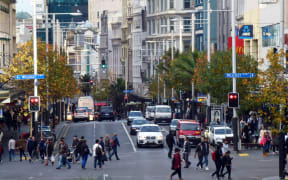The unemployment rate has unexpectedly fallen as more people found jobs in the rebound from the pandemic.

Photo: 123RF
The unemployment rate in the three months ended December fell to 4.9 percent from 5.3 percent in the previous quarter.
Expectations had been for a rise to 5.6 percent.
The number of unemployed fell 10,000, as the economy gained 17,000 jobs during the quarter.
"Overall employment has increased since last year, but not all industries have fared evenly in that time with construction up, and tourism-related industries down," Stats NZ senior manager Becky Collett said.
The construction sector added 13,200 jobs last year.
Wage growth remained subdued with the annual rate easing slightly to 1.5 percent.
The underutilisation rate, a measure of slack in the jobs market, fell to 11.9 percent from 13.2 percent.
Unemployment is defined as those actively seeking work, while underutilisation includes those wanting to work more hours or who could work but are not actively seeking a job.
The strength of the economic rebound also showed through in the number of hours worked, and average earnings, although annual wage growth slowed a fraction to 1.5 percent.
The numbers shredded all forecasts by bank economists and the Reserve Bank.
"We were nonetheless left gobsmacked at just how strong the labour market in Q4 proved to be," ASB senior economist Mike Jones said.
At the start of the pandemic in March 2020, and after the lockdowns, the forecasts were that unemployment could peak as high as 10 or 11 percent, and only recover slowly.
Jones said the flow of recent economic numbers from business confidence, inflation, housing, through to jobs have had a "good vibes trend", showing the impact of the support measures from the government and the Reserve Bank.
The strength of the jobs numbers also raised questions about the RBNZ's next step, and whether it needed to keep printing money through its bond-buying programme, as well as still think about further interest rate cuts.
"Attention is quickly turning to when the stimulus taps, which are still gushing, might be wound back a little," Jones said.
"The market is now factoring in a small - just under 10 percent - chance of a lift in the OCR (official cash rate) by February 2022."
New Zealand's unemployment rate was ahead of most developed economies, with Australia and the US at 6.8 percent, and the average for members of the Organisation of Economic Development and Co-operation (OECD) at 6.9 percent.


